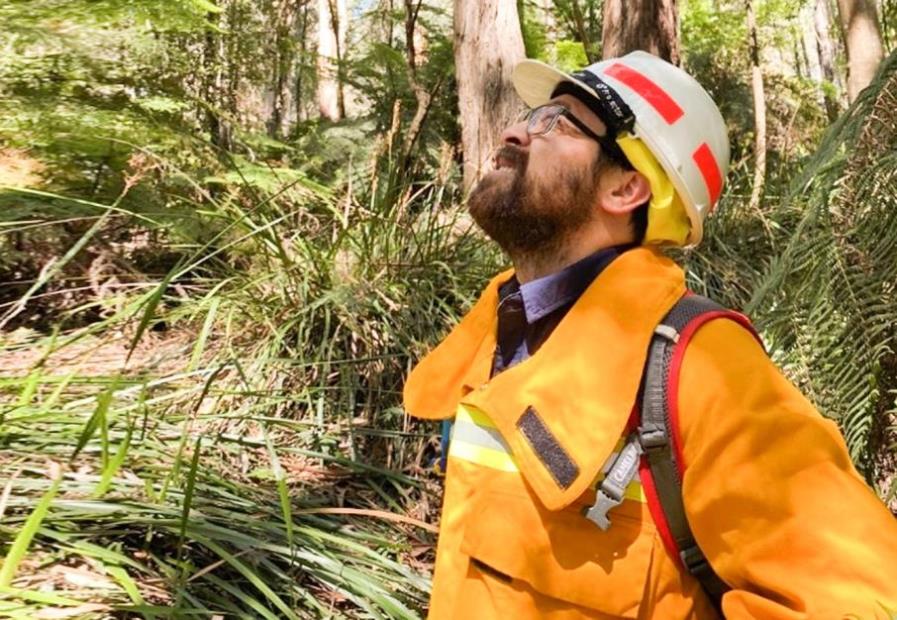
When the Australian Fire Danger Rating System was pioneered by Alan McArthur during the 1950s and 1960s, it was based on standard dry eucalypt forests on level ground and assessed the difficulty of suppression under a range of fire weather conditions.
This fundamental work still forms the basis for fire agency decision-making needs in forests.
Although further research into dry eucalypt forest types has been carried out since Alan McArthur, there has been far less research to help us understand the drivers of fire behaviour in wet eucalypt forests.
Wet eucalypt forests often act as an effective barrier to the spread of bushfires or planned burns because they are typically too wet to burn. However, when wet eucalypt forests transition to a dry state in relative terms, they can carry fire as was tragically observed during the Ash Wednesday and 2009 fires.
When this flammability-switch is on and under hot, dry and windy conditions, bushfires spreading through wet forests can become intense and extremely dangerous because of the amount of heat generated from the burning biomass. As a result, accurately predicting the timing of this transition to a flammable state is important for predicting the ignition, escalation and fire spread potential, so that the true fire risk potential can be captured and communicated.
Under the Victorian Government’s Safer Together Program, CFA in partnership with the Department of Environment, Land, Water and Planning and the University of Melbourne were funded to work on a research project to identify and quantify the factors driving flammability in wet eucalypt forests and to describe these relationships.
Although the overall project is still in progress, the initial piece of research investigated the relative importance of key factors driving flammability – such as drought, heatwaves, fuel availability and fuel moisture – through an expert elicitation workshop. All of the experts present including Kevin Tolhurst, David Bowman and Ross Bradstock agreed there was agreement that fuel availability was a fundamental factor that would likely drive flammability.
It was also acknowledged that fuel availability in wet forests was poorly understood from a scientific sense and that further work needed to be carried out.
This outcome was important to frame the second part of the project, which concentrated on the development of an experimental field campaign to quantify the drivers of ignitability from flaming firebrands in wet and damp eucalypt forests. We measured ignitability at field sites throughout the 2019-20 and 2020-21 fire seasons under varying moisture conditions, fuel structures and ignition techniques.
We then tested the effectiveness of numerous in-forest and modelled landscape fuel and existing landscape scale moisture metrics, such as the Keetch Byram Drought Index, and more recently-developed landscape scale moisture metrics as observed through satellites and models developed by the Bureau of Meteorology.
This research, which will be completed at the end of 2023, will help us to answer simple questions such as under what environmental conditions are fires likely to ignite in damp and wet forests?